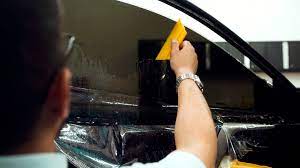Window tinting has become a popular option for vehicle owners and homeowners alike, offering various benefits ranging from enhanced privacy to improved energy efficiency. However, navigating the world of switchable film brooklyn ny can be daunting without the right information. In this comprehensive guide, we’ll delve into the benefits, types, and regulations surrounding window tinting to help you make informed decisions.
Benefits of Window Tinting:
- UV Protection: Window tinting can block up to 99% of harmful UV rays, protecting you and your passengers from the sun’s damaging effects, such as skin cancer and premature aging.
- Heat Reduction: Tinted windows can significantly reduce the amount of heat entering your vehicle or home, keeping interiors cooler and reducing the need for excessive air conditioning.
- Glare Reduction: Tinted windows help minimize glare from the sun, headlights, and other reflective surfaces, improving visibility and reducing eye strain.
- Privacy and Security: Tinted windows offer increased privacy by limiting the visibility of the interior, deterring potential thieves and enhancing the security of your property.
- Enhanced Aesthetics: Window tinting can enhance the appearance of vehicles and homes, adding a sleek and sophisticated look while complementing their overall design.
Types of Window Tinting:
- Dyed Window Film: This type of tinting features a layer of dye that absorbs solar heat and reduces glare. While affordable, dyed window film may fade over time and offer minimal heat rejection.
- Metalized Window Film: Metalized tinting contains small metallic particles that reflect heat and UV rays away from the window. It provides excellent heat rejection and durability but may interfere with electronic signals and radio reception.
- Carbon Window Film: Carbon tinting incorporates carbon particles that block infrared light, offering superior heat rejection without interfering with electronic devices. It provides a sleek, matte finish and is highly durable.
- Ceramic Window Film: Ceramic tinting utilizes advanced nano-ceramic technology to block heat and UV rays while maintaining clarity and visibility. It is the most expensive option but offers the highest level of performance and longevity.
Regulations on Window Tinting:
It’s essential to familiarize yourself with local regulations regarding window tinting, as laws vary by jurisdiction. Most regions have specific limits on the darkness of tint allowed on vehicle windows, typically measured as a percentage of visible light transmission (VLT). Violating tinting regulations can result in fines, vehicle inspections, or even license suspension, so it’s crucial to comply with the law to avoid legal consequences.
Conclusion:
Window tinting offers numerous benefits for vehicles and homes, ranging from UV protection and heat reduction to enhanced privacy and aesthetics. By understanding the different types of window tinting available and adhering to local regulations, you can enjoy these benefits while ensuring compliance with the law. Whether you’re looking to upgrade your vehicle or improve your home’s energy efficiency, window tinting is a versatile solution that can enhance comfort, safety, and style.


